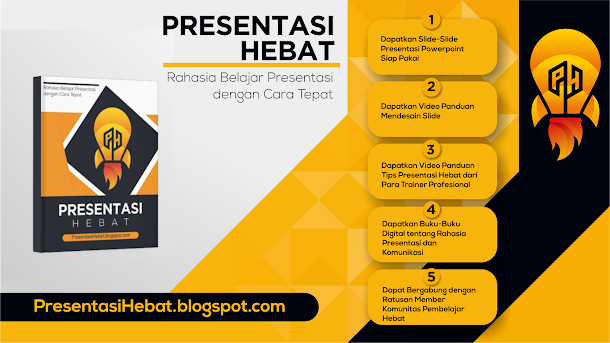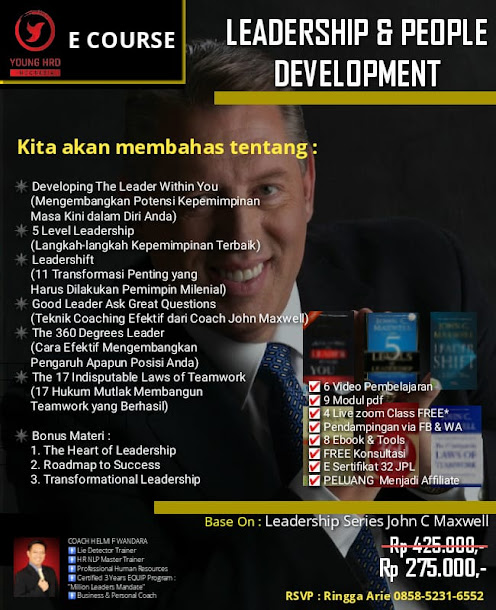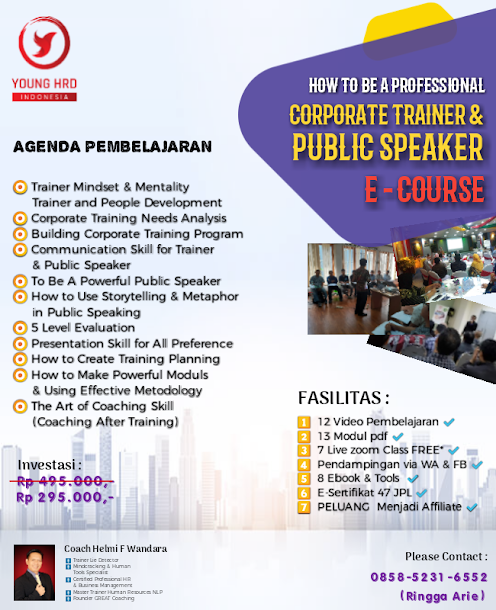Behavioral Characteristics of Highly Successful HR Leaders: A Subjective View by Alan R. May
The academic and popular management literature is replete with observations on leadership competencies. However, there are few references to the personal behaviors associated with success within any particular functional discipline. Indeed, we typically encounter a fixed (and often long) list of behavioral attributes that, in total, define “leadership” in the view of the author.
As HR practitioners, we tend to apply leadership behavioral definitions at either a broad organizational or specific job level. Across large, complex organizations, we use these lists to select a subset of attributes that define preferred leadership behaviors. In turn, the HR function will infuse these behavioral attributes into the selection, training, development, and assessment systems throughout an organization as a means to define and align a corporate culture. At a job level, it is also common to find a set of “leadership competencies” advanced as predictive of success in a given role. HR functions will often apply competency assessments in the selection process to increase the odds that a candidate will experience success in their new assignment.
Within the HR functional discipline, many organizations maintain “HR competencies” that are applied at all levels of HR functional practice. A number of HR professional associations, including SHRM, HRCI and CIPD, are refining HR competency models to include personal behaviors in the mix of success elements for HR practitioners. Ask any chief human resources officer—and even many CEOs—and you will hear about the requirements of knowing the business, delivering HR service excellence, and change management as descriptors of HR excellence. However, far fewer organizations have defined the distinctive personal behaviors that are indicative of highly successful HR practitioners. I would like to advance an admittedly subjective list of personal attributes that may be of value to organizations as they evolve their HR competency models or to aspiring HR professionals as they develop their careers.
My experience and observations over 30 years of HR practice suggest that there are six discernible behavioral traits of successful HR leaders. Across a career that began with an HR internship in state government and continued to a CHRO role and beyond, I have held HR generalist and specialist assignments at every organizational level. I have also had the privilege of leading HR teams ranging from a personal assistant sitting outside my office to hundreds of HR professionals deployed globally.
Moreover, my professional experiences to date have enabled me to work with perhaps more than 1,000 business leaders—from front-line supervisors to CEOs— across numerous industries, including manufacturing, consumer products, and financial services. Therefore, the recognition of these six behavioral attributes has been informed by the views of countless business professionals across industrial categories, functional disciplines, and organizational hierarchy.
In my experience, the following six personal characteristics are resident within highly successful HR leaders: intellectual curiosity, simplicity, empathy, courage, dynamic range, and grit. While one might argue that most, if not all, of these characteristics are essential in any leader, I have seen these six in combination differentiate true excellence from mere competency in the HR practitioner. Furthermore, I have witnessed that these personal traits are evident despite the strong forces that corporate culture tends to impose on defining preferred behaviors in any given organization. Let me take a moment to define each, as applied to the unique role HR plays within an organization and the impact the function can have on both the enterprise and individuals.
Intellectual curiosity
This personal characteristic can be seen as an obvious prerequisite for success in just about anything in life. While that might be true, intellectual curiosity is also the spark that drives an HR professional to both know the business cold and develop effective relationships. The intellectually curious HR professional asks the second or third question to explore core assumptions, proposes alternatives or new models in decision-making discussions, and helps others connect the dots between objective facts and behavioral observations.
A highly inquisitive mind enables an HR professional, especially in a generalist role, to explore all facets of the value chain within an enterprise. In turn, the insights developed in an unrelenting quest to understand a given business model are applied in the form of HR expertise and recommendations that transform organizational performance. In addition, this behavioral trait is the basis for developing deep interpersonal relationships within the workplace. Through intellect and genuine interest in others, outstanding HR professionals also develop an expanding network of enduring and reciprocal relationships that allow them to get complex work “done done” through others.
Simplicity
Most “customers” of HR services—line managers, individual employees, corporate directors, or third parties such as unions or regulators—are so engaged in their day jobs that they have a limited share of mind for HR processes, procedures, policies, or practices. Human resources is a highly complex field of practice; ask any line leader about three months after they have accepted an HR position as a supposed developmental assignment!
A highly successful HR leader makes the complex simple, without compromising functional integrity or organizational impact. Simplicity in HR practice is one hallmark of functional excellence. As Albert Einstein so eloquently stated, “If you can’t explain it simply, you don’t understand it well enough.” This is as true for an HR generalist coaching a first-level supervisor as for a benefits director explaining the operational dynamics and financial implications of a pension plan. The demonstration of simplicity is not about “dumbing down” the function; it is about capturing the essence of what an end-user really needs from HR to meet a specific organizational or individual need.
Empathy
Several years ago, I worked with a mid-level executive in a large consumer products company who was seeking a new HR manager from a number of highly qualified internal candidates. As the head of the function, I knew all of the candidates and suspected that we would face a difficult choice to select the best individual for a role that supported hundreds of front-line employees.
As we prepared to conduct our interviews, I asked the executive what would be the most heavily weighted criteria among several I had advanced to guide the process. He responded that all those criteria were important, but that I had missed a key behavioral attribute which, in his experience, enabled HR professionals to excel within his business unit: empathy. His logic was simple: “Leaders come to work each day and spend their time with either people or things. Great leaders spend the majority of their time with people because people get things done. Without this investment of time—the most precious of all resources in an organization—a leader will never develop the empathy for those he or she leads.”
He was particularly insistent about the demonstration of empathy in an HR leader. “It’s not enough to get the fundamentals and transactions correct and to have a foundation in behavioral science. I expect my HR leader to provide genuine insights regarding every individual within the organization I lead,” he told me. Exceptional HR professionals at all levels go beyond expertise in behavioral sciences. They demonstrate empathy as they inform and inspire others to provide individual support, align teams, manage conflict, and lead change.
Let me provide a simple example of the power of empathy. Early in my career I was an HR generalist in a large, unionized distribution facility. Frankly, morale in the plant was very low and the HR team at times seemed to thrive on creating an adversarial relationship with the union and, by extension, with the workforce at large.
One day a front-line employee who had worked at the site for more than 40 years walked into the HR office seeking help in understanding her retirement options.
This employee was well known to all throughout the site for being highly vocal in her negative opinions regarding management practices. One of the HR representatives offered to spend a few minutes with her to explain the nuances of the pension plan. Minutes soon turned into a few hours, subsequent one-on-one meetings, and ultimately a joint visit to the local Social Security Administration office to resolve some paperwork issues as the HR representative assisted her with an application for federal benefits.
Despite the fact that this was one HR professional working with a lone employee among hundreds at the site, the empathy demonstrated in support of a long-service employee “went viral” well before the era of social media. In fact, the HR team was so inspired by its representative’s demonstration of empathy that the team decided to change its employee support processes from more “high tech” to much more “high touch.” This was just one of many changes inspired by this empathetic behavior that, over time, not only improved morale (as reflected in employee surveys) but led to greater workforce productivity and more amicable relationships with the union.
Courage
Even the most open and progressive organization can be a tough place to work as an HR professional. Whether they are navigating interpersonal conflicts, team dynamics, ethical dilemmas, a union negotiation, or a workplace crisis, HR professionals often must demonstrate courage to be successful. At its best, courage in this context goes beyond merely expressing a dissenting view at a business meeting or confronting the dysfunctional behavior of an executive, manager, or employee. It is the personal conviction to say and do what you believe is right — adopting a fact-based, objective demeanor in the heat of battle.
Courage in an HR role can be as seemingly trivial as insisting that a manager continue to search for a better candidate rather than accepting an average candidate just to get the job filled quickly. Or it can be as profound as overtly opposing a short-term tactic, like forcing high levels of overtime, that will inevitably sap morale and actually reduce productivity in the long term. In extreme instances, a courageous position can cost an HR leader their job. However, in most instances it inspires others to advance the debate on a given issue and ultimately to make a balanced decision.
Dynamic range
Life within a large, complex organization can be a bit like theater. There are moments when the script calls for gravitas and others that may invite levity—all in the same day. HR professionals may be called upon to inspire thousands of employees with their passion and creativity while delivering what may be a relatively dry topic. At the same time, HR professionals need to master the art of the “quiet conversation” as they coach, cajole, or otherwise guide superiors, peers, and subordinates through matters that are often quite personal.
My experience suggests that the extent of this range needs to be as broad among CHROs as entry-level HR representatives. Ultimately the personal expression of a broad dynamic range is all about having the desired impact on groups or individuals in a fast-paced workplace where most communication is conducted via email and social media. The expression of a broad dynamic range is not manipulative if done in a genuine manner. Highly effective HR leaders can flex their emotions across a continuum of situational, cross-cultural, or topical variations.
Grit
Success often comes from doing the same mundane things longer and better than anyone else, well after others have lost patience or given up in frustration. Perhaps the best example of this behavior among HR professionals is in the area of driving long-term organizational change. Within HR, we often get excited about particular “change models” or methodologies for aligning organizations against a given business strategy. While many business leaders across all functions seem to enjoy defining these strategies and formulating plans, more often than not these leaders stray from the intended course not too long after an exhilarating offsite or dynamic board review.
Great HR leaders recognize that it takes months if not years to produce sustainable business results within an enterprise. This is a matter of functional discipline that at times can get labeled as overly bureaucratic or process-driven. However, it takes grit to stay the course, remind the team of the required actions, and drive the communications and processes necessary to achieve the economic or organizational strategic intent.
Another example of grit in the HR profession is the tenacity of holding to a vital policy objective or management principle. Often HR leaders are called upon tosustain strategic distinctions in policy or practice despite intense pressure to do otherwise. Examples of “HR grit” can be found when organizations conduct mergers, acquisitions, or divestitures, during collective bargaining negotiations, or in the annual review of compensation and benefits levels.
In conclusion
There may be other behavioral attributes that can be observed across a broad population of highly successful HR professionals. And any personal qualities brought to the role must augment the core requirements of HR functional depth, business savvy, and analytical skills to ensure success. However, I have found that exercising intellectual curiosity, simplicity, empathy, courage, dynamic range, and grit in the workplace will differentiate the truly great from the merely adequate among HR professionals.
I readily admit that I have struggled with demonstrating each of these behavioral markers throughout every aspect of my career. However, I find the list useful in self-assessment, often as I debrief a given situation, interaction, or initiative. And I would invite leaders to reexamine the HR competencies within their organizations and consider adding the six behavioral elements that ultimately define excellence within the function. Further, I would challenge those aspiring to a long-term career as an HR professional to assess their behavioral strengths against this list and to seek opportunities to demonstrate these traits as they maximize the impact of HR within their organizations.
Alan R. May
Alan R. May is vice president of Boeing Commercial Airplanes’ human resources organization. Previously, he served as vice president of HR for Boeing Defense, Space & Security and as vice president of strategy, compensation, and benefits for the Boeing Company. In this capacity, he directed HR strategy, executive and enterprise compensation, health care policy, and retirement benefits for the company. Prior to joining Boeing, May served as chief talent and HR officer for Cerberus Capital Management, a leading private equity firm based in New York, and held a number of global HR and business integration roles during a 15-year career at PepsiCo, culminating with an assignment as senior vice president of HR for the rapidly growing Quaker, Tropicana, and Gatorade division. Prior to PepsiCo, May held HR and general management roles at Caterpillar and TRW. May serves as a trustee of the Ravinia Festival and the Chicago Symphony Orchestra Association, and sits on the corporate advisory board for the Marshall School of Business at the University of Southern California. He also is a member of the Economic Club of Chicago, the Human Resources Policy Association, and the University of Illinois Foundation. May holds a bachelor’s degree in economics and a master’s degree in labor and industrial relations from the University of Illinois.
E-book The Rise of HR - Wisdom from 73 Thought Leaders by HR Certification Institute (2015)



















